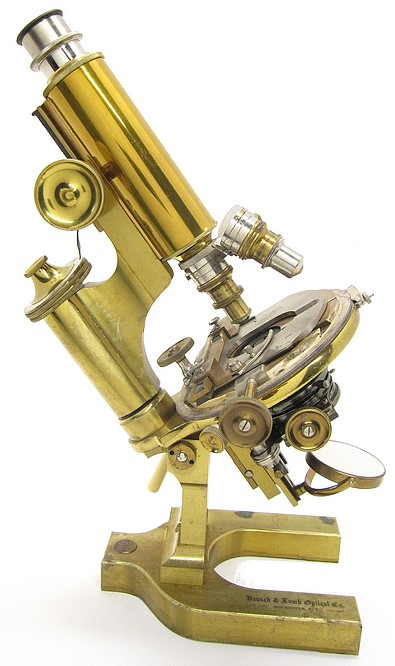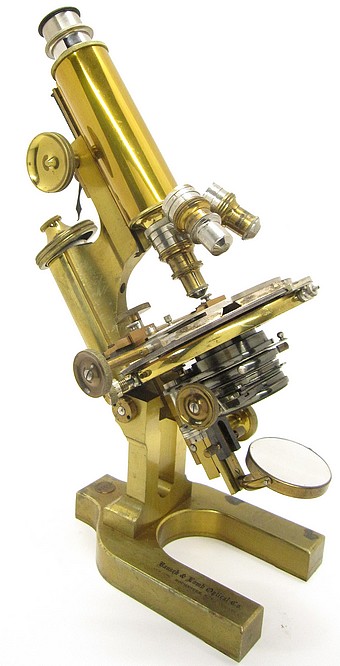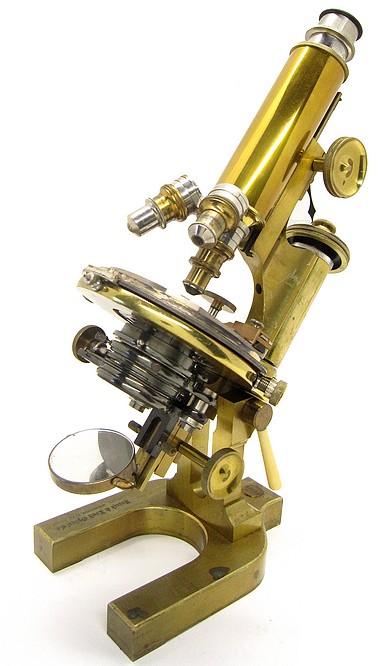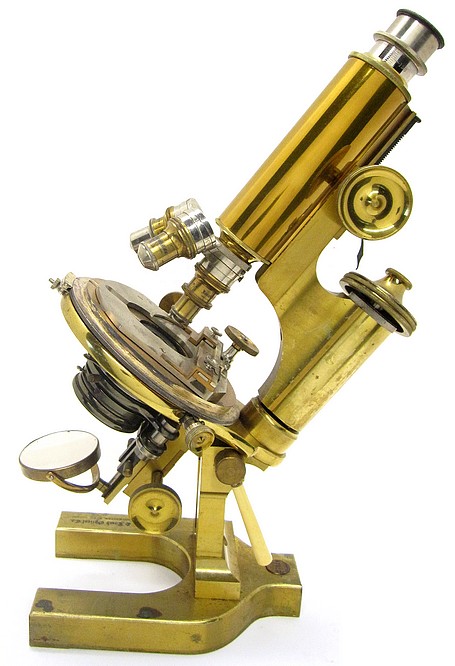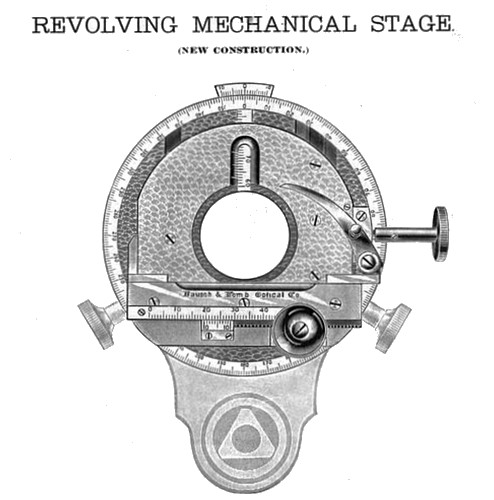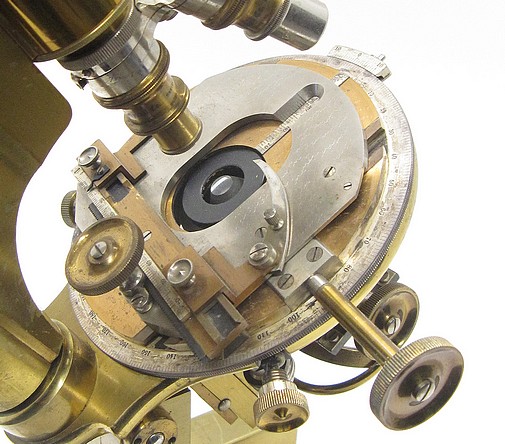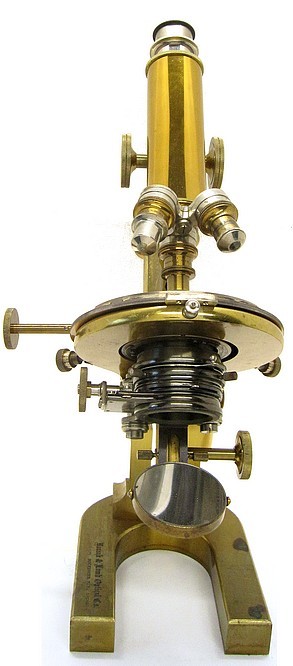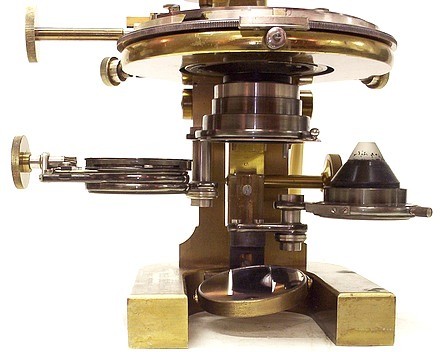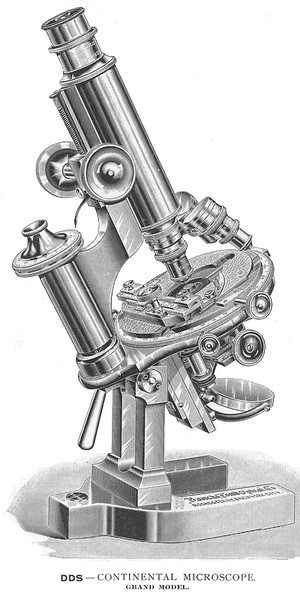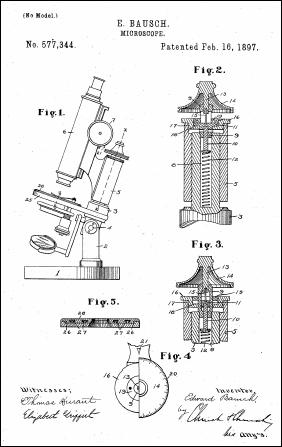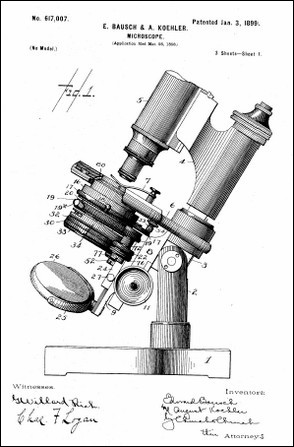The "Grand model" was the top-of-the-line instrument produced by the firm at the end of the 19th century. Fully equipped, it cost $200.00 in 1898.
See the description of
the Bausch & Lomb "Grand model" continental
microscope DDS in the 1898 catalog. An excerpt from that catalog is given below:
CONTINENTAL MICROSCOPE
GRAND MODEL
DS & DDS
This microscope stand is an ideal instrument in the fullest sense of that word; viz., perfect in design as far as the limitations of the human mind will permit, and perfect in construction as far as it is possible for human skill to perfect anything.
The large body tube, epecially constructed to permit a large cone of light to pass from the objective, as well as its complete adjustments, fiis this stand especially for Photo-micrography.
The stand is of the finest brass throughout, and is finished in the most appropriate manner in every part. The base, while of the horseshoe type, is extra heavy and has the back claw prolonged so as to virtually form a tripod base which is entirely stable in any position of the microscope. The pillar, consisting of two massive columns, supports the stage and arm in a manner particularly adapted to secure solidity and at the same time add grace to the instrument. The stage is of unusually large size, measuring 126 mm. in diameter, and is either fitted with vulcanite plate in the DS, or with mechanical stage in the DDS stands. In either case the stage is revolving and with centering screws, whereby the geometrical center of the stage may be made to accurately coincide with the optical axis of the objective. The mechanical stage supplied with the DDS stand is the same as that described on page 19, except that it is larger, to conform to the larger stand, and has both the stop against which the object slide rests and the movable finger adjustable and provided with graduations for record purposes. The heads of the centering screws are also provided with graduations and index and with a series of lines recording the number of revolutions of the screw. These extra graduations make this the only microscope made with revolving mechanical stage with which it is possible to accurately record the position of any given object in such a manner that it can be referred to again if the instrument shall have been used ad interim for other work.
The mechanical stage is readily interchangeable with the plain revolving stage, as both are made to standard gauges. To effect the change it is only necessary to loosen the centering screws and substitute one stage for the other. The purchase of both stages is recommended, as the plain stage will often be required where the mechanical stage would not be, and vice versa.
The fine adjustment is our improved triangular bar adjustment, in which the movement is by micrometer screw of such accuracy and delicacy that there is absolutely no lost or lateral motion possible. In order to give increased delicacy in manipulation the head of the micrometer screw is made extra large and has a concavity at the apex in which to rest the
index finger for greater steadiness. The circumference is graduated to 100 parts, permitting measurement of the thickness of objects under observation.
The coarse adjustment is by diagonal rack and pinion, the advantage of the diagonal teeth being that much greater delicacy of movement is secured, together with greater lasting qualities, as three teeth engage ai all times and with a shearing contact instead of in the jarring fashion as with the straight rack. The diagonal rack and pinion as made by us is entirely free from all back lash or lost motion. The main tube is of large size and has nickeled and graduated draw tube sliding in cloth-lined sleeve and taking standard gauge eyepieces. The sleeve carrying draw tube is removable when using the stand for photography.
The substage is our New Complete Substage as described on pages 15 and 16.
